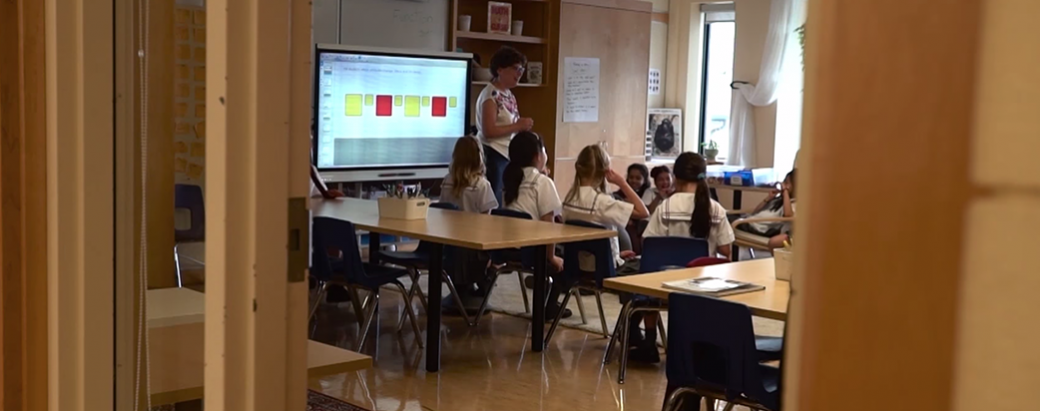
About the Project
This project is one of the 2016 WISE Awards winners.
JUMP produces a classroom numeracy program that nurtures success and confidence in teachers and students. With embedded review, scaffolding of concepts, rigorous use of language, and opportunities for continuous assessment and practice, the program accommodates diverse student needs and abilities to close the achievement gap. JUMP Math is an evidence-based method of teaching mathematics that inspires measurable higher performance along with major improvements in students’ self-esteem and attitude towards learning.
Context and Issue
Society has accepted without question one of the most destructive tenets of education, namely that children are born with vastly different mental abilities and that only a small minority can be expected to excel. The intellectual poverty that we have imposed on the majority of children, out of ignorance of their true potential, is a major cause of material poverty, because it makes our society less capable of distributing wealth in a fair, rational or sustainable way.
Numeracy is widely understood as a foundation of twenty-first century economic competitiveness. Despite this, many national, state and municipal governments experience faltering performance in mathematics. Poor math skills contribute to high dropout rates, limited life success, increased risk of anti-social outcomes and burdensome economic costs. Numeracy skills in middle school grades have been shown to be strong predictors of eventual graduation from high school, itself a pre-requisite to employability.
Solution and Impact
JUMP Math challenges teaching and societal norms, by eliminating the assumption that there are natural hierarchies of ability. JUMP Math promotes the idea that every student has the ability to love and be good at math. Math anxiety is another challenge for a large proportion of primary school teachers. Recognizing this, JUMP’s lessons are carefully designed to be delivered effectively, and with minimal stress, by teachers who have limited backgrounds in math.
The methods on which JUMP is based are ones that cognitive scientists now promote for the development of expertise in general. The JUMP method is called “Guided Discovery.” In a JUMP lesson, students develop and explore ideas on their own, but the lesson is a carefully scaffolded series of questions and challenges in which one idea naturally leads to the next. Students are provided with many supports of the kind that research has identified as effective, such as immediate feedback and worked examples. They are also given many opportunities to practice and consolidate concepts and are assessed frequently so they can get excited about their success and so the teacher can be sure no one is falling behind.
Teacher Resources are fundamental to the implementation of JUMP’s Guided Discovery approach. They include carefully constructed lessons plans that enable all teachers, including the many primary school teachers who are not experts in math, to instill in students a deep and transferable mastery of key concepts. For many of the same reasons that the JUMP Math approach works so well for students, it also enables teachers to deepen their understanding of, and confidence in, math, making them better, more confident teachers.
Approximately 170,000 students used JUMP Math in the 2015-16 school year, a compounded average growth rate of 34 percent since 2006. In a RCT, children who were taught using JUMP Math were found to have progressed at twice the rate of students in the control group who were taught with one of Canada’s most widely used programs. Students’ test scores increased at approximately 1.8 to 2.9 times the rate of the WRAT- 4 standardization sample in each of the past four years in schools in economically disadvantaged communities where the program was implemented at no cost.
Future Developments
JUMP operates as a social enterprise with earned income from sales of its program and other income coming from grants and donations. JUMP also develops partnerships in countries where it does not have a presence to ensure growth in use and high quality implementation of the program. Recently, JUMP has diversified its philanthropic sources with support from venture philanthropists, high net worth individuals and increased support from foundations and corporations. Several grants and donations have been received from these sources and the pipeline of opportunities and relationships suggests this will be a significant impetus for growing impact. JUMP’s expansion strategy includes partnering with NGO’s and other education organizations that are established and credible players in the markets in which they plan to grow. Some of these relationships already include joint proposals to funders.
Based on its operations as a social enterprise (selling its program to schools) JUMP is also seeking to attract patient capital in the form of impact investments. These investments will be repaid from net sales in future years. JUMP is executing a strategy with goals to accelerate growth in its base of Canada, establish a strong presence in the US, and expand internationally.


